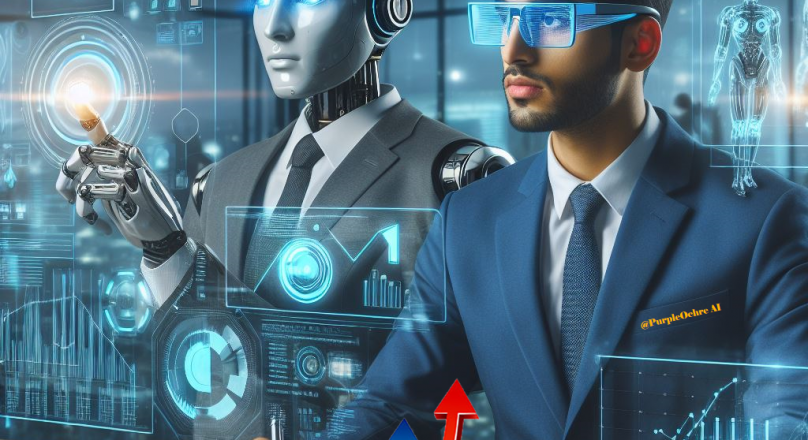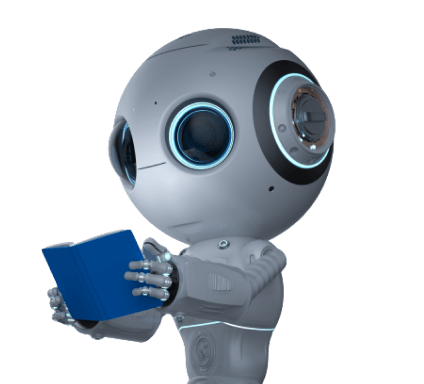Results for ""
PERSONALIZATION & RECOMMENDATIONS:
Personalization and recommendation leverage AI to tailor experiences for individuals. In the e-commerce sector, platforms like Amazon use machine learning to analyze customer behavior, providing personalized product recommendations and targeted marketing. This approach extends beyond shopping, as seen in streaming services like Netflix, where AI algorithms suggest content based on users’ viewing history and preferences. The key is to understand user behavior, segment audiences, and deliver hyper-personalized interactions, enhancing customer engagement and satisfaction.
- Customer Segmentation: Amazon uses machine learning to segment customers based on their browsing and purchasing behavior. This enables personalized product recommendations and targeted marketing.
- Product Recommendations: Netflix employs a recommendation engine to suggest movies and TV shows based on a user’s viewing history, preferences, and behavior.
- Customer Journey Analysis: E-commerce platforms like Shopify analyze customer journeys to identify patterns, optimizing the placement of product recommendations and improving conversion rates.
- Automated Reminders: Subscription-based services, such as Spotify or meal kit deliveries, send automated reminders when a user’s subscription is due for renewal, reducing churn.
- Dynamic Pricing: Airlines such as Delta and online travel agencies adjust ticket prices based on demand and user behavior, optimizing revenue through personalized pricing strategies.
- Music Streaming Playlists: Spotify curates personalized playlists for users, utilizing machine learning algorithms that analyze listening habits and preferences.
- E-commerce Bundling: Retailers like Amazon suggest bundled products based on users’ previous purchases and browsing history, encouraging additional sales.
- Streaming Content Personalization: Services like Netflix utilize AI algorithms to recommend movies and TV shows based not only on viewing history but also on real-time preferences, enhancing user engagement.
- E-commerce Personal Stylists: Fashion retailers employ AI to act as virtual stylists, offering personalized outfit recommendations based on individual tastes, body types, and current fashion trends.
- Health and Wellness Apps: Fitness apps like Fitbit leverage AI to provide personalized workout plans and nutrition recommendations based on users’ fitness goals and progress.
PREDICTIVE ANALYTICS:
Predictive analytics involves using AI techniques to forecast future outcomes based on historical data. In sales, companies like Salesforce employ predictive analytics to forecast conversion rates, enabling more accurate decision-making. In healthcare, predictive analytics aids in early disease detection and personalized treatment plans by analyzing medical records and genetic data. This approach transforms decision-making from reactive to proactive, identifying patterns and trends that may not be apparent through traditional analysis, thus optimizing strategies and mitigating risks.
- Sales Pipeline Forecasting: Salesforce uses predictive analytics to forecast sales pipeline conversion rates, enabling sales teams to focus on high-potential opportunities.
- Churn Prediction: Telecom companies like Verizon use predictive models to identify customers at risk of churning, allowing proactive retention efforts.
- Supply Chain Optimization: Retailers like Walmart use predictive analytics to optimize inventory management, minimizing stockouts and reducing excess inventory costs.
- Performance Metrics Monitoring: Online platforms like Google Ads utilize AI to monitor subtle changes in key performance metrics, enabling advertisers to make data-driven decisions.
- Healthcare Diagnostics: IBM’s Watson Health applies predictive analytics to analyze medical records and genetic data, aiding in early disease detection and personalized treatment plans.
- Energy Consumption Forecasting: Utility companies use predictive analytics to forecast energy consumption patterns, optimizing power generation and distribution for efficiency.
- Employee Attrition Prediction: HR departments employ predictive models to identify employees at risk of leaving, allowing proactive retention strategies.
- Weather Forecasting: Meteorological agencies utilize predictive analytics and machine learning models to forecast weather conditions accurately, aiding in disaster preparedness and resource allocation.
- Fraud Detection in Banking: Financial institutions implement predictive analytics to detect unusual patterns and potential fraud in real-time, enhancing security for customers’ financial transactions.
- Employee Productivity Forecasting: Workforce management tools employ predictive analytics to forecast employee productivity, helping organizations optimize staffing levels.
PROCESS AUTOMATION:
Process automation utilizes AI, including robotic process automation (RPA), to streamline and automate repetitive tasks. In industries like finance, RPA is employed to automate transaction processing, reducing errors and improving efficiency. In customer service, chatbots powered by natural language processing automate inquiries, providing instant responses. Process automation not only accelerates task completion but also allows human employees to focus on more complex, high-value work, fostering overall operational efficiency.
- Robotic Process Automation (RPA): Healthcare organizations automate claims processing, reducing manual efforts and minimizing errors.
- Chatbots for Customer Service: Airlines like Delta deploy chatbots to handle routine customer inquiries, providing instant responses and improving overall customer satisfaction.
- Personalized Sales Correspondence: Retailers such as Sephora use AI to generate personalized marketing emails based on individual customer preferences and purchase history.
- Document Parsing: Financial institutions automate document processing for tasks like loan applications, extracting relevant data from forms efficiently.
- Legal Document Review: Law firms use AI-powered tools to automate the review of legal documents, extracting relevant information and improving the efficiency of legal processes.
- Manufacturing Quality Control: Automotive manufacturers employ computer vision for quality control, automating the inspection of components for defects on production lines.
- Social Media Content Moderation: Social platforms like Facebook utilize AI algorithms to automate content moderation, identifying and removing inappropriate content.
- Inventory Management in Retail: Retailers use AI-driven automation to optimize inventory levels, ensuring efficient stock replenishment, reducing holding costs, and preventing stockouts.
- IT Service Desk Automation: Companies deploy AI-powered bots to automate routine IT support tasks, streamlining issue resolution and improving overall IT service efficiency.
- Content Creation Automation: Media companies utilize AI for automated content creation, from generating news articles to producing video summaries, improving content delivery speed.
CONVERSATIONAL INTERFACES:
Conversational interfaces use natural language processing and chatbots to facilitate communication between users and systems. In customer service, businesses deploy chatbots to handle common queries and provide support 24/7. Virtual assistants assist with tasks like scheduling meetings, answering HR-related questions, and facilitating self-service for customers. Conversational interfaces enhance accessibility, efficiency, and user experience by enabling seamless interactions through natural language.
- Sales Chatbot: Online retailers like ASOS implement chatbots to assist customers with product recommendations, sizing information, and order processing.
- Customer Self-Service: Banking institutions deploy virtual assistants to enable customers to check balances, transfer funds, and manage routine transactions without human intervention.
- Scheduling Assistance: SaaS companies like Calendly use conversational interfaces to help users schedule meetings seamlessly, improving user experience.
- HR Support Chatbot: Large enterprises implement HR chatbots to answer employee queries about policies, benefits, and training programs.
- Language Translation Services: Google Translate employs NLP for accurate language translation, facilitating communication across diverse linguistic backgrounds.
- Virtual Health Assistants: Healthcare providers integrate AI-driven virtual assistants to interact with patients, answering health-related queries and providing information on medications.
- Learning and Development Chatbots: Educational institutions implement chatbots to assist students with course selection, provide study resources, and answer academic queries.
- Language Learning Chatbots: Educational platforms implement AI chatbots to assist language learners, offering conversational practice, vocabulary building, and real-time feedback.
- Virtual Real Estate Assistants: Real estate agencies utilize AI-powered virtual assistants to engage with clients, providing property information, scheduling tours, and answering queries.
- Restaurant Reservation Chatbots: Dining establishments deploy chatbots to handle reservation requests, answer menu-related questions, and provide location details, enhancing customer services.
ENHANCED OFFERINGS:
Enhanced offerings involve integrating AI directly into products and services to provide added value. In the tech industry, companies like Apple incorporate biometric security features, such as facial recognition, to enhance device security. Augmented reality applications in fashion retail allow customers to virtually try on clothing items. AI is also embedded in software for predictive analytics, ensuring users can forecast future scenarios. Enhanced offerings leverage AI to differentiate products, delivering innovative and compelling experiences that align with evolving customer expectations.
- Computer Vision in Mobile Apps: Snapchat utilizes computer vision for facial recognition filters, providing users with an augmented reality experience.
- NLP in Documents: Google Workspace integrates NLP for smart reply suggestions in emails, improving communication efficiency.
- Predictive Analytics in Software: Salesforce embeds predictive analytics in its CRM software to help businesses forecast future scenarios and mitigate risks.
- Biometric Security Features: Smartphone manufacturers like Apple incorporate facial recognition for secure device unlocking, enhancing user security.
- Autonomous Vehicles: Automotive companies like Tesla incorporate AI for self-driving capabilities, enhancing the safety and efficiency of transportation.
- Fashion Retail Virtual Try-Ons: Online fashion retailers use augmented reality for virtual try-on experiences, allowing customers to visualize clothing items before purchase.
- Personal Finance AI Advisors: Fintech companies leverage AI for personalized financial advice, analyzing users’ spending patterns and recommending optimal savings strategies.
- AI-Generated Art: Creative industries experiment with AI to generate unique artworks, pushing the boundaries of artistic expression with algorithms that create visual and auditory experiences.
- Smart Agriculture: Agriculture incorporates AI for precision farming, utilizing sensors and data analytics to optimize crop yields, reduce resource wastage, and enhance overall farm efficiency.
- Personalized Learning Platforms: EdTech companies employ AI to tailor learning experiences, adapting content and pacing to individual students’ abilities and learning styles.
CONTINUOUS IMPROVEMENT:
The competitive advantage of AI is fleeting. Commit to continuous improvement through ongoing experiments and learning. View AI not as a one-time initiative but as a new way of operating. Stay ahead by aligning AI strategies with your products and customers, ensuring a differentiated and compelling offering.
By strategically implementing AI in these areas, businesses can optimize processes, elevate customer experiences, and maintain a competitive edge in today’s dynamic market.
Sources of Article
www.purpleochre.com






